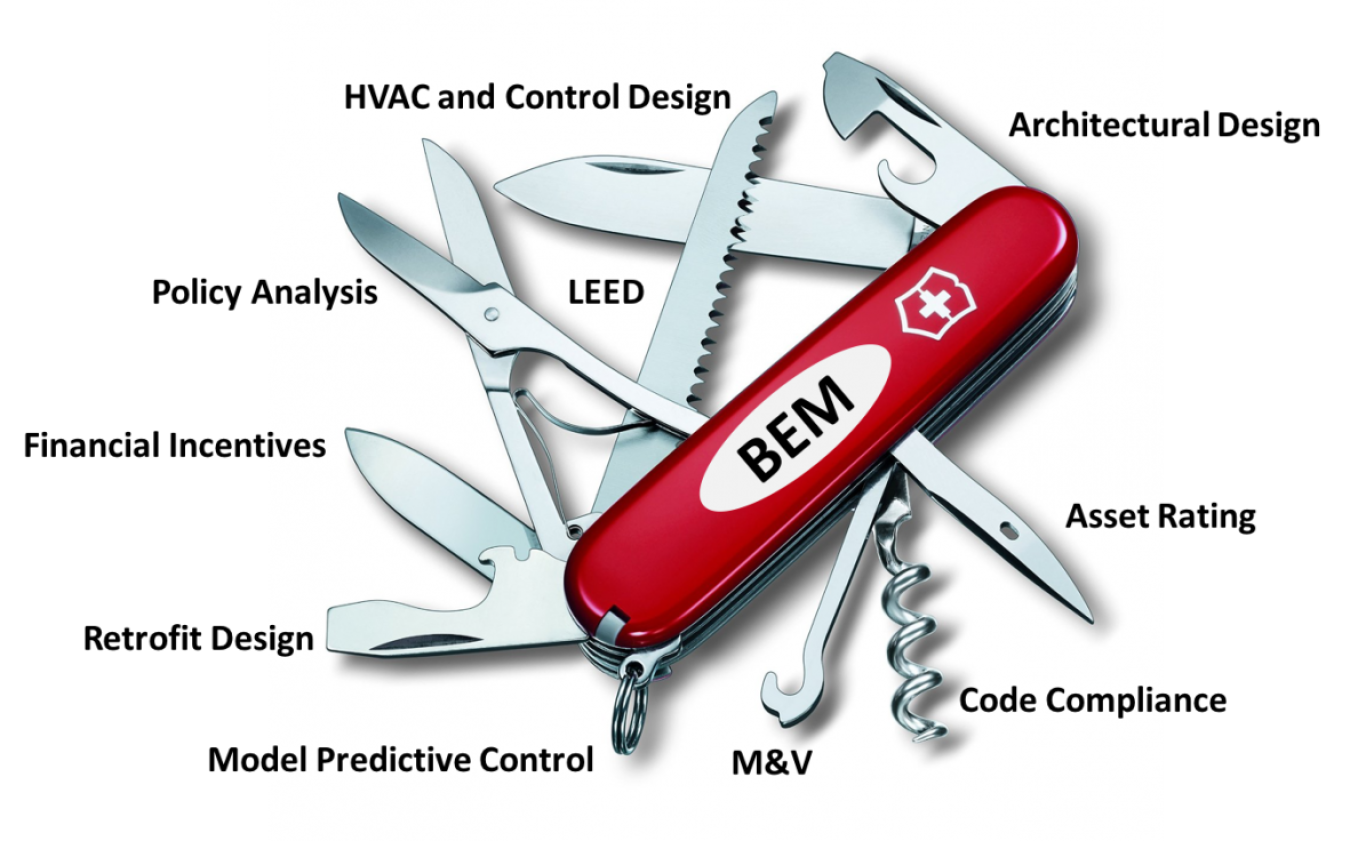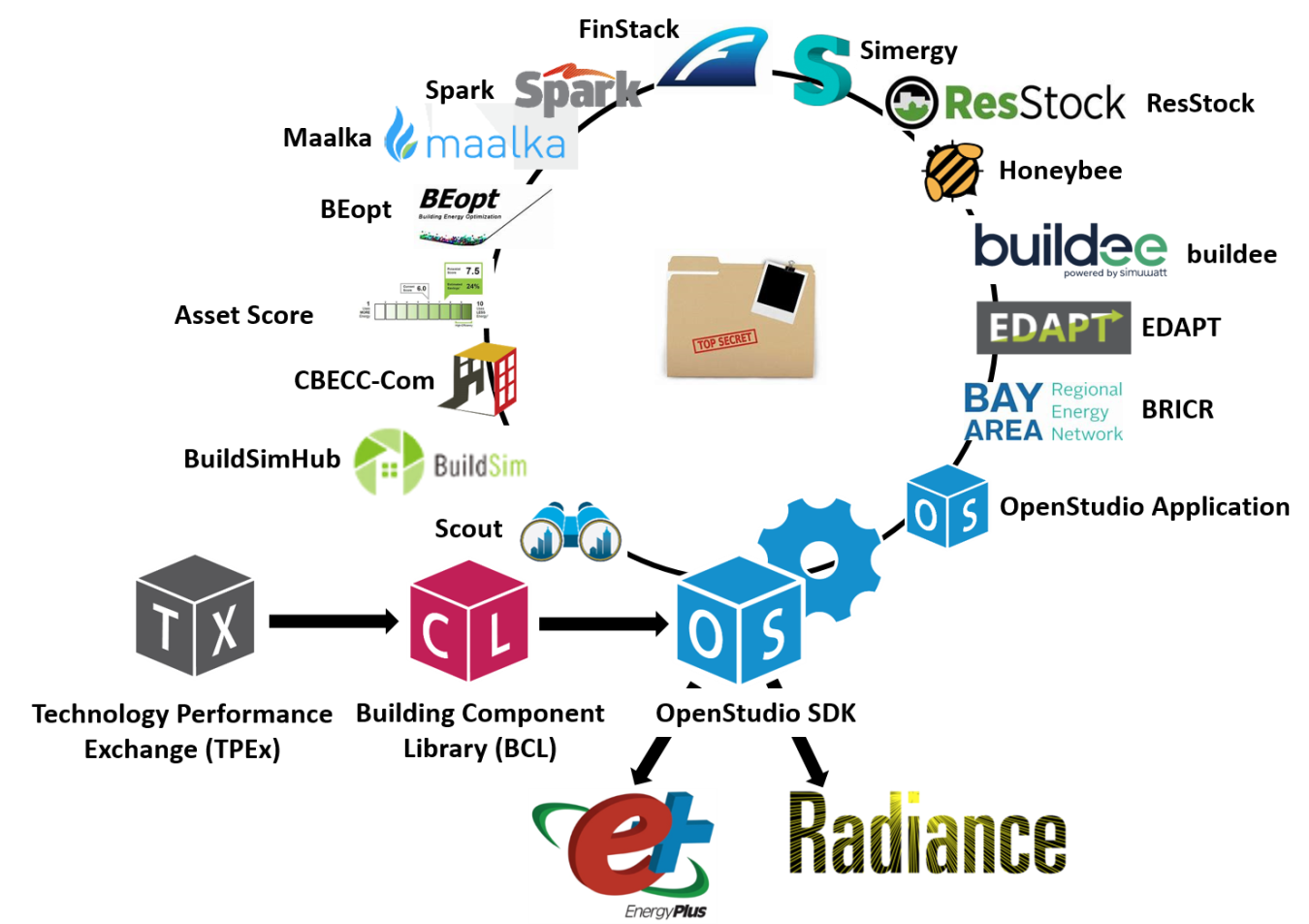Whole-Building Energy Modeling (BEM) is a versatile, multipurpose tool that is used in new building and retrofit design, code compliance, green certification, qualification for tax credits and utility incentives, and real-time building control. BEM is also used in large-scale analyses to develop building energy-efficiency codes and inform policy decisions. So what exactly is BEM? And what roles does the U.S. Department of Energy (DOE) play in the BEM industry and community?
WHAT BEM IS
BEM is physics-based software simulation of building energy use. A BEM program takes as input a description of a building including geometry, construction materials, and lighting, HVAC, refrigeration, water heating, and renewable generation system configurations, component efficiencies, and control strategies. It also takes descriptions of the building’s use and operation including schedules for occupancy, lighting, plug-loads, and thermostat settings. A BEM program combines these inputs with information about local weather and uses physics equations to calculate thermal loads, system response to those loads, and resulting energy use, along with related metrics like occupant comfort and energy costs. BEM programs perform a full year of calculations on an hourly or shorter basis. They also account for system interactions like the ones between lighting and heating/cooling.
HOW BEM IS USED
BEM applications leverage its ability to answer questions that cannot be easily answered by other means. Major use cases include the following:
- Architectural Design: Architects use BEM to design energy-efficient buildings, specifically to inform quantitative trade-offs between up-front construction costs and operational energy costs. In many cases, BEM can reduce both energy costs and up-front construction costs.
- HVAC Design and Operation: Commercial building HVAC systems can be large and complex. BEM helps mechanical engineers design HVAC systems that meet building thermal loads efficiently. It also helps design and test control strategies for these systems.
- Building Performance Rating: BEM can be used to assess the inherent performance of a building while controlling for specific use and operation. Inherent performance rating is the basis for processes like code compliance, green certification, and financial incentives.
- Building Stock Analysis: BEM analysis on prototype models supports the development of energy codes and standards and helps organizations like utilities and local governments plan large scale energy-efficiency programs.
New use cases emerge as BEM becomes more powerful and easier to use.

Building Energy Modeling (BEM) is a multi-purpose tool for building energy efficiency, supporting projects at the level of individual buildings (design, control, rating, financial incentives) and building stocks (program development, research).
DOE’S GOALS AND ROLES
DOE has supported research, development, and deployment of BEM—and has itself been an active user of BEM—since the 1970s. Through the Building Technologies Office (BTO), DOE develops two significant BEM software packages.
- EnergyPlus™ is a state-of-the-art BEM engine capable of modeling low-energy designs and HVAC systems, in addition to more conventional buildings.
- OpenStudio™ is a software development kit (SDK) that reduces the effort of EnergyPlus-based application development. It also includes a graphical application that demonstrates use of the SDK. OpenStudio has been instrumental in accelerating the adoption of EnergyPlus.
BTO distributes EnergyPlus and OpenStudio under a commercial-friendly non-exclusive open-source license. BTO encourages companies to embed the software into applications and services, add features and content, provide commercial training and support, and generally focus on addressing the specific needs of a diverse set of BEM user communities. BTO is committed to supporting EnergyPlus and OpenStudio long-term to provide certainty to commercial vendors and their clients. The transparency and impartiality conferred by open-source and by EnergyPlus’ comprehensive documentation is also important for some use cases, especially ones supporting codes and standards.

In addition to developing software, BTO funds the maintenance and expansion of ASHRAE Standard 140, a method of test for BEM engines. In 2016, it initiated a three-year project to use national lab test facilities to generate high-resolution empirical data sets to validate selected BEM calculations at a finer granularity. Testing and validation improve BEM accuracy, help establish minimum BEM software requirements, and increase BEM stakeholder confidence.
Finally, BTO partners with organizations like the American Society of Heating, Refrigeration, and Air Conditioning Engineers (ASHRAE), the American Institute of Architects (AIA), and the International Building Performance Simulation Association (IBPSA) to support the BEM community. BTO sponsors hackathons, design competitions, and student travel to BEM conferences. It also collaboratively develops online resources for modelers like the UnmetHours peer-to-peer question-and-answer site and the AIA’s 2030 Commitment Design Data Exchange site.
These “core” activities are reviewed annually by outside stakeholders to ensure its portfolio continues to move industry forward. DOE supplements them with competitive awards that fund BEM research and deployment. These help DOE balance its portfolio, address market needs, and explore new directions.
